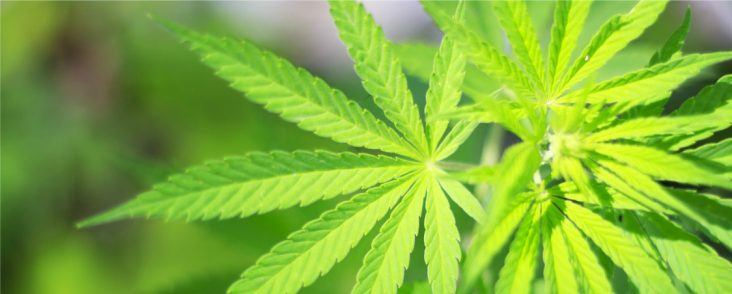Top NIH official says medical pot research will continue despite HHS chief’s views
by March 6, 2018 1:51 pm 429 views

A top official with the federal agency that investigates and researches alternative medicine in the U.S. told Talk Business & Politics the agency will continue studying the health value of cannabis despite recent comments by the newly confirmed U.S. Secretary of Health and Human Services director there was “no such thing” as medical marijuana.
Dr. David Shurtleff, acting director of the National Center for Complementary and integrative Health, said research on the effectiveness and efficacy of natural products such as cannabis will remain a big part of the NCCIH’s area of research on natural productions and alternative medicine.
“A good portion our portfolio is natural products. And we are pretty much looking at cannabinoids as a treatment for pain,” Shurtleff said in an interview with TB&P. “So, we are interested in looking at research in this area for sure.”
Shurtleff’s agency is part of the National Institute of Health (NIH), one of the nearly a dozen under agencies within the HHS’s mammoth federal bureaucracy. He added although the FDA has not approved marijuana for medical purposes, the NIH has approved two different medications in pill form that contain cannabinoids, the chemical compound found in marijuana.
‘NO FDA APPROVED USE OF MARIJUANA’
Newly confirmed HHS Director and former drug industry executive Alex Azar stated at a press conference in Ohio on opioid dependence that medical marijuana was imaginary.
“I would want to emphasize first that there really is no such thing as medical marijuana,” Azar said his first official public appearances since he was confirmed by the Senate in early January to replace former HHS Director Tom Price. “We have treatments that are approved by the FDA that are safe, that are proven to be safe and effective for pain, safe and effective for other conditions. There is no FDA approved use of marijuana, a botanical plant.”
Azar traveled over the weekend to Dayton, Ohio to visit Brigid’s Paths, a facility for mothers and infants struggling with opioid dependence. He then participated in a roundtable with several patients and policymakers to discuss the challenges facing the nation’s opioid crisis has presented for the healthcare system, including foster care and child service delivery programs.
Azar’s comments about medical marijuana came in response to a reporter’s question about how medical marijuana had reduced opioid deaths in Colorado and other states. Like legislation approved by Arkansas lawmakers in 2017 in response to a voter referendum, the Ohio Legislature legalized medical marijuana in 2016 and awarded 12 large-scale cultivation licenses in the state last year.
The Arkansas Medical Marijuana Commission selected five Arkansas-based companies to grow and supply the state’s first legalized cannabis products to medical patients across the state. As of Feb. 23, the Arkansas Department of Health (ADH) had approved 4,116 applications for medical marijuana registry ID cards allowing citizens to eventually obtain Arkansas-grown, doctor-prescribed marijuana and other cannabis-related medical products.
There are more than a dozen qualifying conditions approved for treatment under the Arkansas Medical Marijuana Act of 2017. The conditions include muscle spasms related to multiple sclerosis, cancer, Lou Gehrig’s disease, HIV/AIDS, glaucoma, hepatitis C, Crohn’s disease, ulcerative colitis, PTSD, severe arthritis, Alzheimer’s, and other conditions that produce chronic pain.
FEDERAL MARIJUANA RESEARCH
Research reported by the NIH also noted that the cannabinoid THC, which has the same “high” as recreational use marijuana, is useful in increasing appetite and decreasing nausea. Another cannabinoid of interest to medical researchers is cannabidiol (CBD), which does not contain intoxicating properties.
Shurtleff said the cannabis plant has about 80 different compounds, but THC and CBD are the most commonly studied.
“And what we are really trying to do here is look at these different constituencies in the plant to really think about how we keep them apart and look at them systematically in the context of understanding its biology and how we can apply it to treating diseases,” said the NCCIH director.
For example, Shurtleff said, the United Kingdom and Canada have already approved a cannabinoid spray that is SHC-CBD derivative shown to be useful in the treatment of spasms in multiple sclerosis patients. London-based GW Pharmaceuticals primarily markets the product under the name “Sativex,” and is undergoing approval by the U.S. Food and Drug Administration now in the U.S.
“Here’s a case where you’ve taken a compound from the cannabis plant, done some systematic work and combined into a medicine where we know how to dose and deliver the drug is that is effective for patients with MS. So that’s the kind of strategy that we are using here at NCCIH,” said Shurtleff.
Still, the NIH researcher said studying the entire marijuana plant is a problem because there are different kinds of strains that have not been properly research.
“It is sort of like when you go to your doctor and you are given a high blood pressure medicine or a drug that lowers cholesterol. There are lots of test to know exactly what dose, how frequently to use it and what the outcome will be. There is similar approach to studying cannabis and we can really extract the compound from the marijuana plant to actually medications that can be proven safe and effective,” he said.
